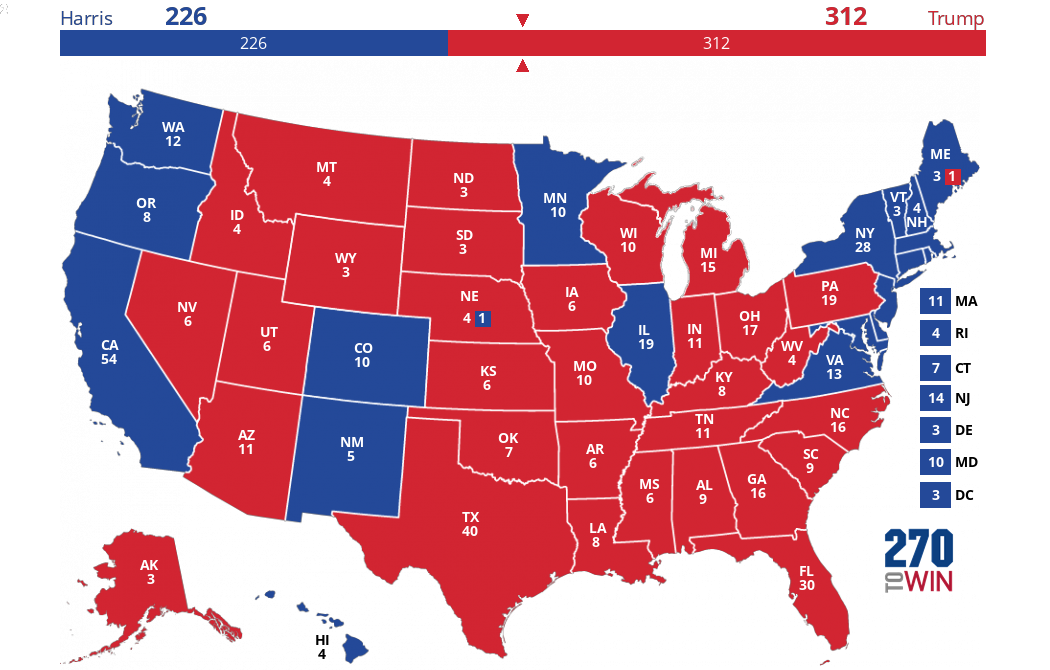2022 Senate Elections: Current Polling Averages and Consensus Rating
By 270toWin Staff
October 12, 2022, 12:35 PM ET
The information on this page is current as of noon Eastern Time on October 12. Select a state in the table to see the latest average as well as individual poll detail.
Based on the consensus forecast, 24 of this year's 35 U.S. Senate seats up for election are seen as safe for the incumbent party. That includes 15 of 21 GOP-held seats, and nine of 14 held by Democrats. Assuming those play out as expected, Democrats1 1Includes independents in Maine and Vermont that caucus with the party. will hold 45 seats, Republicans 44.
The other 11 seats feature varying levels of competitiveness, according to the consensus. The table below lists those states, ordered by the 270toWin polling average margin between the two major party candidates.
| State | ^ | Democrat | Average | Republican | Average | Margin | Consensus |
| Ohio | Ryan | 44.8% | Vance | 45.2% | 0.4% | Leans R | |
| North Carolina | Beasley | 43.8% | Budd | 44.4% | 0.6% | Leans R | |
| Nevada | Cortez Masto* | 44.5% | Laxalt | 46.2% | 1.7% | Toss-up | |
| Wisconsin | Barnes | 46.8% | Johnson* | 49.2% | 2.4% | Leans R | |
| Georgia | Warnock* | 47.7% | Walker | 44.0% | 3.7% | Toss-up | |
| Pennsylvania | Fetterman | 46.4% | Oz | 42.0% | 4.4% | Tilts D | |
| Florida | Demings | 42.2% | Rubio* | 47.8% | 5.6% | Likely R | |
| New Hampshire | Hassan* | 49.8% | Bolduc | 43.4% | 6.4% | Leans D | |
| Arizona | Kelly* | 49.0% | Masters | 41.4% | 7.6% | Leans D | |
| Utah | McMullin1 | 37.0% | Lee* | 45.0% | 8.0% | Likely R | |
| Colorado | Bennet* | 47.8% | O'Dea | 39.4% | 8.4% | Likely D |
^ Current party holding the seat * Incumbent
1In lieu of nominating a candidate, Democrats in Utah have endorsed independent Evan McMullin.

